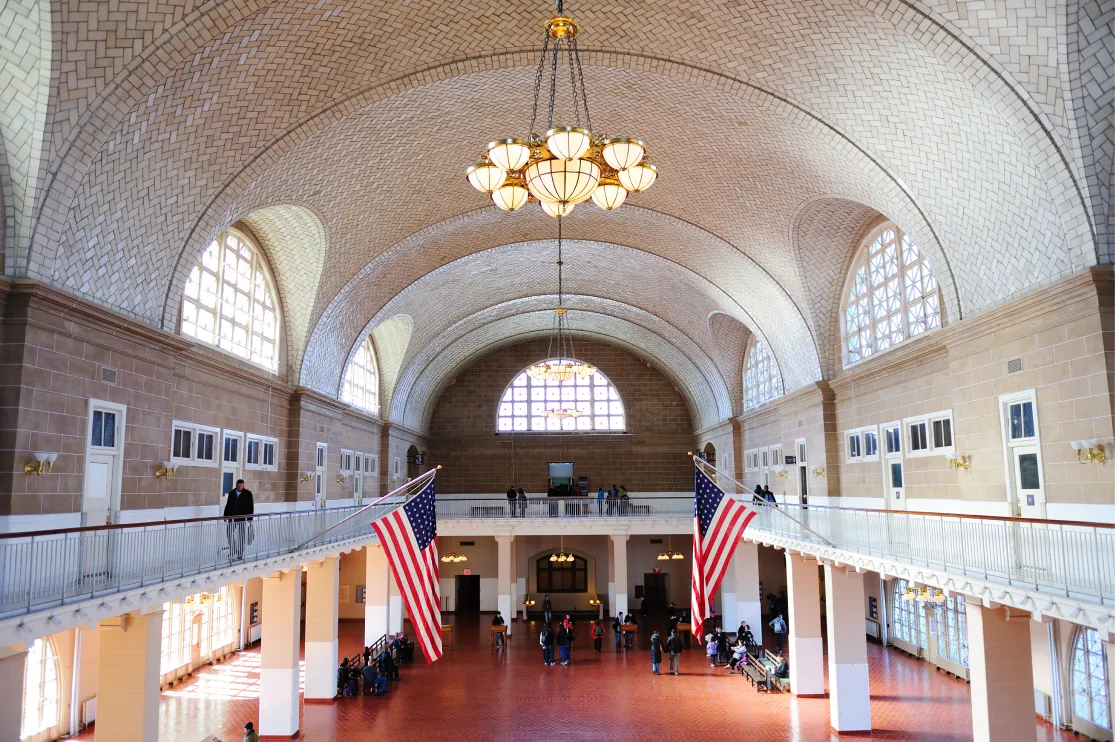The White House Renovation That Sparked a Revival!
Conversations reignited the moment White House announced plans for a grand neoclassical ballroom addition. The soaring Corinthian columns, coffered ceilings, and symmetrical elegance are some of the classical features of this 90,000-square-foot expansion. The internet couldn’t stop talking about it!
This modern architectural style been shaping American identity since day one. From government buildings to modern homes, it’s everywhere.
The White House renovation serves as a perfect entry point to understanding why neoclassical architecture matters and how it continues to define the spaces we build today.
Whether you’re an architect, designer, or simply curious about the buildings around you, understanding neoclassical principles opens up a new way of seeing American architecture. Let’s get started.
What is Neoclassical Architecture?
Neoclassical architecture emerged in the mid-18th century as a return to classical styles of ancient Greece and Rome.
Characterized by its emphasis on simplicity, symmetry, and geometric forms, neoclassical architectural style was a reaction against highly ornate styles of the Baroque and Rococo periods.
Coming to their key features. The neoclassical architectural style emphasizes:
-
large-scale columns, domes, pediments
-
clean lines and smooth surfaces
-
Grandeur without excess
-
Symmetry without rigidity
-
Monumentality that inspires rather than intimidates
This clearly shows a deep inclination towards pure form of architecture!
Neoclassical architecture in USA? It became more than just a style. It became democracy’s visual language.
From our architectural design services experience, we’ve seen how the famous neoclassical architecture architects Thomas Jefferson and other founders chose this approach for government buildings, they made a statement: “America would build on ancient republics, not European monarchies.”
The History of Neoclassical Architecture

The story begins underground.
When archaeologists unearthed Pompeii and Herculaneum in the 1700s, Europe discovered ancient Roman and Greek life frozen in time. And just like that, Europe became obsessed with classical antiquity and preferred minimalism modernism.
Wealthy Europeans embarked on the Grand Tour, traveling through Italy and Greece to study ancient ruins. They returned with sketchbooks full of columns, pediments, and proportional systems.
Architects like Robert Adam in Britain and Jacques-Germain Soufflot in France incorporated these elements into contemporary buildings.
Each region interpreted neoclassicism differently:
-
France: Unornamented exteriors and monumental civic buildings like the Panthéon
-
Britain: Refined Regency-era country houses and public structures
-
United States: Federal-style buildings connecting the republic with ancient democracies
American neoclassicism was a political choice as much as an aesthetic one.
Do you know? Benjamin Henry Latrobe, James Hoban, and Thomas Jefferson deliberately chose Greek and Roman references. They wanted buildings that communicated stability, permanence, and democratic values.
The movement peaked in the 19th and early 20th centuries, then evolved into contemporary neoclassical architecture with modern construction methods.
Characteristics of Neoclassical Architecture
So, what makes a building neoclassical? We’ve pinned down the neoclassical architecture characteristics.
Columns are the most recognizable element
You’ll spot three types: Doric (simple and sturdy), Ionic (those scroll-like capitals), and Corinthian (fancy acanthus leaves). And no, they’re not just decorative. Ancient architects worked out precise mathematical ratios for these things.
Symmetry dominates every aspect
Here’s a fun test: Stand in front of any neoclassical building and draw an imaginary line down the center. Voila! Everything mirrors itself. This balance extends to floor plans, window placement, and even interior room arrangements.
Simple geometric forms replace elaborate ornamentation
Neoclassical architects favored rectangles, circles, and triangles. Clean lines and harmonious proportions create visual interest without excessive decoration.
Pediments and domes crown many structures
That triangular element above columns? Yeah! That’s a pediment, borrowed directly from Greek temples. Domes reference the Roman Pantheon and symbolize celestial perfection.
Blank walls showcase restraint
Unlike Baroque buildings covered in sculptures and reliefs, neoclassical facades often feature large expanses of unadorned stone or marble. Material quality speaks for itself!
Monumentality creates presence
These buildings command attention through scale and proportion rather than decoration. Government buildings, museums, and libraries adopted this approach to convey authority and permanence.
From BluEnt’s experience working on as-built drawing projects for historic buildings, we can tell you that neoclassical structures also prioritize quality materials.
You know, Limestone, marble, and granite were chosen not just for appearance but for longevity indeed.
Examples of Neoclassical Architecture in US
Thinking about What is the most famous neoclassical architecture? The United States offers some of the world’s finest neoclassical buildings. Have a look.
The White House
The presidential residence stands as America’s most famous neoclassical structure. Featuring a symmetrical facade, tall Ionic columns, and Palladian-inspired windows, all symbolizing strength and democratic order through its balanced proportions and classical references.
The United States Capitol Building

Neoclassical grandeur at its peak! The iconic dome, vast porticoes supported by Corinthian columns, and symmetrical wings create an imposing yet accessible presence.
The U.S. Supreme Court Building
Another example of neoclassical building, US Supreme Court demonstrates how neoclassicism remained relevant into the 20th century. The courthouse architecture was designed to resemble a Roman temple, it features monumental steps and towering Corinthian columns that convey the weight and authority of law.

Thomas Jefferson’s Virginia home shows how neoclassicism adapted to residential architecture. Jefferson incorporated symmetry, classical proportions, and a signature dome into a neoclassical architecture home that balanced grandeur with livability.
Some other examples of modern neoclassical architecture include University of Virginia and parts of Harvard University’s campus, State and City Hall Buildings. The Metropolitan Museum of Art in New York also feature neoclassical design elements.
Little-Known Facts About the White House Ballroom Renovation
According to CBS News, the new 3D architectural renders of the newly proposed White house ballroom suggest that it will be bigger than the main white house building itself.
Here’re some more interesting and little known facts that we derive from the CGI.
-
3D exterior renders show a “glass bridge” connecting the new ballroom to the Executive Residence, further separating the structure from the historic home.
-
The interior theme is white and gold, reminiscent of Trump’s Mar-a-Lago estate, and designed for opulent formal events.
-
Bulletproof windows are like an upgrade for security during state-level gatherings
-
3D models reveal several architectural quirks, such as stairways that don’t connect properly and mismatched windows and columns compared to official blueprints.
-
The new ballroom occupies the site of the East Wing, which was demolished for the project, marking the first major structural change to the White House since Truman’s renovation in 1948.
-
Two commemorative magnolia trees were removed for construction, originally planted for Presidents Harding and Roosevelt.
What makes neo classical renovations challenging is balancing historical authenticity with modern requirements. Building codes, accessibility standards, and updated infrastructure must integrate seamlessly.
Something we’ve learned from 3D BIM coordination projects that: you can’t just add columns and call it neoclassical. The proportions, materials, and spatial relationships must follow classical architecture principles.
Modern Take on Neoclassical Design
Contemporary architecture architects still can’t resist neoclassical principles, even when building with steel, glass, and concrete.
Modern neoclassical architecture adapts classical proportions and symmetry to contemporary needs. Residential designers incorporate neoclassical elements into upscale homes, such as:
-
Columned porticos
-
Pediments over entrances
-
Symmetrical facades
-
Classical proportions
And homeowners love it. There’s something about those classical proportions that just feels… permanent.
The key difference between historical and contemporary neoclassical architecture lies in materials and construction methods. Modern buildings reference classical proportions using curtain walls and contemporary finishes rather than limestone and marble.
For architects and designers today, neoclassical elements offer proven solutions for creating substantial, dignified, and enduring buildings. The mathematical proportions and symmetry provide frameworks that work across scales.
Recommended Reads:
Winding Up
From the White House to state capitols, neoclassical buildings shape how Americans experience civic life. Honestly, understanding this international style architecture for modern interiors helps appreciate the thought behind structures we encounter daily.
Whether you’re planning a renovation, designing a new building, or simply curious about architecture, neoclassical architecture elements offer timeless lessons about creating spaces that balance beauty with function.
At BluEnt, we understand the technical challenges of working with both historic neoclassical structures and contemporary designs that reference classical proportions. Our CAD drafting, 3D modeling, and CAD to BIM services help architects and designers bring complex projects to life with precision and efficiency.
From GFC drawings and as-built drawings of historic buildings to construction documentation for new neoclassical-inspired designs, we provide technical expertise that transforms architectural vision into a buildable reality.
Ready to tackle your next architectural project? Connect with BluEnt and discover how our CAD design and drafting services support design excellence across all architectural styles.
Frequently Asked Questions
What is the meaning of neoclassical architecture?A building style from the mid-1700s inspired by ancient Greek and Roman design, focusing on clean lines, symmetry, and balance instead of fancy decorations.
What are the 5 main characteristics of neoclassical architecture?The main characteristics of neoclassical design style are columns, perfect symmetry, clean lines, domes and pediments, and quality materials like marble and limestone.
What is the difference between classical and neoclassical architectureClassical architecture is the original ancient Greek and Roman buildings. Neoclassical is the modern comeback version inspired by them, built with new techniques. It’s inspired by classical style but built with new techniques for modern needs. Classical = the original. Neoclassical = the comeback.
What is the most famous neoclassical architecture?The White House is America’s most famous neoclassical building. It has tall columns, perfect balance on both sides, and classical windows. Other iconic examples include the U.S. Capitol Building, the Supreme Court Building, and Thomas Jefferson’s home Monticello.
What are the features of neoclassicism?Neoclassical features include large-scale columns and domes, clean lines and smooth surfaces, symmetry throughout the design, geometric forms (rectangles, circles, triangles), blank walls with minimal decoration, and monumentality that creates presence through size and proportion rather than fancy details. The focus is on balance, simplicity, and timeless beauty.


















 Key Elements of Contemporary Architecture: What Truly Defines the Modern Architectural Style?
Key Elements of Contemporary Architecture: What Truly Defines the Modern Architectural Style?  Introducing International Style Architecture for Modern Interiors
Introducing International Style Architecture for Modern Interiors  How 3D Architectural Visualization Boosts Property Pre-Sales?
How 3D Architectural Visualization Boosts Property Pre-Sales?  A Guide to 3D Condo and Apartment Rendering for Residential Projects
A Guide to 3D Condo and Apartment Rendering for Residential Projects